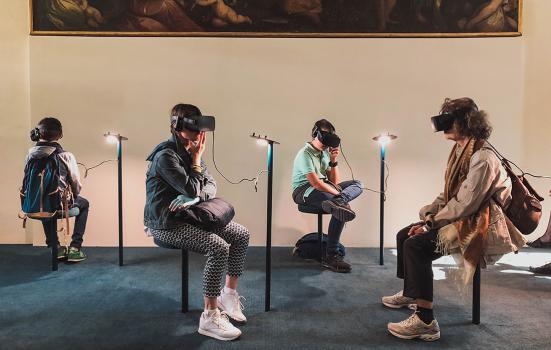Interest in virtual museum tours was shortlived, suggests US research, which finds that ‘things to do with kids’, ‘rainy day activities’ and ‘date night’ ideas are having more enduring appeal.

Lucrezia Carnelos on Unsplash
“Museum closures, major media coverage, and a mighty social media effort by museums to offer an online experience to audiences” led to peak interest in virtual museum tours at the start of the lockdown, but as the spotlight fell away, so did online audiences.
Analysis of Google Trends data by US museum development organisation Museum Hack has found that interest in virtual museum tours started to surge on March 14, peaked on March 17 and has seen a steady decline ever since. Michael Alexis, Director of Marketing at Museum Hack, believes this trend is likely to continue. He commented: “With the wild fluctuations in the market, it is possible that we will see another surge in interest for virtual museum tours soon. My best guess is that for as long as the pandemic lasts, some interest in virtual museum tours will remain, but that we are still past peak.”
Alexis concludes: “The mainstream market isn’t interested in seeing these world class institutions in virtual 3D spaces or photo galleries” as ‘there is nothing that can replace in-person encounters with art’.
His observations were developed by Giuliano Gaia from Milan’s Poldi Pezzoli Museum, which was among the first in Italy to start organising virtual tours: “What makes the difference in my opinion is the human guide. Virtual environments are empty and boring – put in it a live human guide and everything changes. Our virtual guides to the Poldi Pezzoli museum always have a waiting list.”
But Alexis’ research found three potential audiences for museums have continued to hold the online visitor’s attention, and “just as interest peaked for virtual museum tours, it is now starting to peak in other areas that museums can serve.”
Virtual field trips for schools have been explored by teachers looking for “live or facilitated online experiences”; “quarantine date ideas” such as trivia quizzes, storytelling sessions and art classes appeal to those wanting home entertainment; and “things to read” are showing enduring appeal, with more universal uptake than podcasts.
Alexis said: “Even though I expect podcasts are here to stay, I believe written content holds its value longer and will have a greater return for you.”
He recommends crafting content both on the stories in a museum collection, and also on topics related to audiences that may visit that museum: “For example, ‘date ideas in Brisbane’, ‘things to do with kids in Toronto’, and ‘rainy day activities in Seattle.’




